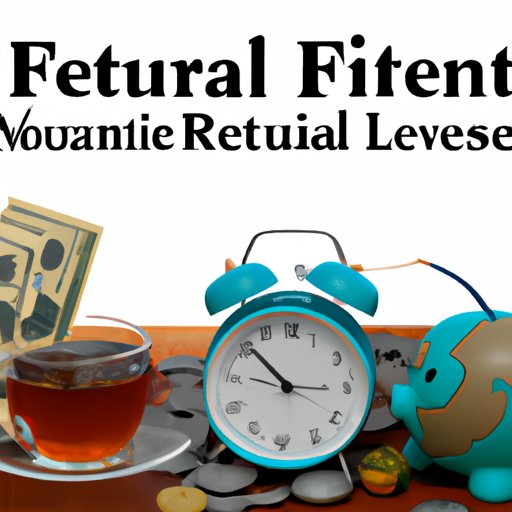Introduction
Retirement investing is one of the most important steps you can take to secure your financial future. It involves putting your retirement savings into investments such as stocks, bonds, mutual funds, and real estate, in order to receive returns on your money over time. Retirement investing can be a daunting task, but it is essential to understand the options available to ensure that you are making the best decisions for your long-term financial security.

A Retirement Investment Guide: Understanding Your Options for Securing Your Financial Future
There are several types of retirement investments available, including traditional and Roth IRAs, 401(k)s, annuities, and life insurance policies. Each type of investment has its own set of advantages and disadvantages; understanding these will help you make the best decision for your individual circumstances.
Types of Retirement Investments
Traditional and Roth IRAs are tax-advantaged retirement accounts that allow you to save for retirement on a pre-tax or post-tax basis, depending on which type of account you choose. 401(k)s are employer-sponsored retirement plans that offer tax-deferred growth and often come with matching contributions from your employer. Annuities are contracts between you and an insurance company, which provide a steady stream of income during retirement. Life insurance policies can also provide a source of retirement income if they include a cash value component.
Benefits of Investing in Different Types of Retirement Accounts
Each type of retirement investment comes with its own set of advantages. Traditional and Roth IRAs offer tax advantages and flexibility, while 401(k)s come with employer matching and other perks. Annuities provide a guaranteed stream of income and life insurance policies provide death benefit protection as well as the potential for cash value growth. Understanding the benefits of each type of retirement investment can help you decide which option is best for you.

Investing Your Retirement Funds: Pros and Cons of Different Strategies
When considering which type of retirement investment is right for you, it’s important to weigh the pros and cons of each option. Traditional and Roth IRAs offer tax deductions and tax-free growth, respectively, but also come with contribution limits. 401(k)s offer employer matching and more flexible contribution limits, but can have high fees and may not provide access to certain types of investments. Annuities provide guaranteed income, but can be expensive and have restrictions on withdrawals. Life insurance policies can grow cash value, but come with high premiums and surrender charges.
How to Make Smart Decisions When Investing Retirement Money
When deciding which type of retirement investment is best for you, there are a few key factors to consider. First, it’s important to understand your current financial situation and determine how much money you need to save for retirement. Next, you should consider the types of investments available in each type of retirement account, and whether they align with your goals and risk tolerance. Finally, you should research the fees and other costs associated with each type of investment before making a final decision.
Strategies for Diversifying Your Retirement Investments
It’s also important to diversify your retirement investments in order to reduce risk. You should spread your retirement funds across different types of investments, such as stocks, bonds, mutual funds, and real estate. Additionally, you should consider investing in different asset classes, such as domestic and international stocks, and different regions, such as emerging markets. Diversifying your investments can help protect your retirement savings against market downturns and other risks.

Retirement Investing: What You Need to Know Before Putting Your Money At Risk
Investing your retirement funds carries risks, and it’s important to understand these before making any decisions. The stock market can be volatile, and there is always the potential for loss. Additionally, certain types of retirement investments, such as annuities and life insurance policies, come with fees and other costs that can reduce your returns. It’s important to be aware of these risks and take steps to mitigate them.
Tips for Mitigating Risk When Investing Retirement Funds
One way to reduce risk when investing your retirement funds is to diversify your investments across different asset classes and regions. Additionally, you should use stop-loss orders to limit losses if the market drops. Finally, you should consider using low-cost index funds or exchange-traded funds (ETFs) to keep fees and other costs low. By following these tips, you can help ensure that your retirement savings are protected.
The Benefits and Risks of Investing Your Retirement Savings
Investing your retirement savings can be a great way to secure your financial future, but it’s important to understand the potential risks associated with it. While investing can provide significant returns over time, there is always the potential for loss. Additionally, certain types of investments, such as annuities and life insurance policies, come with fees and other costs that can reduce your returns. It’s important to understand the benefits and risks of investing before putting your money at risk.
Conclusion
Retirement investing can be a difficult and intimidating task, but it is an essential part of securing your financial future. There are several types of retirement investments available, each with its own set of advantages and disadvantages. It’s important to understand your options and consider the pros and cons before making any decisions. Additionally, you should be aware of the potential risks associated with investing and take steps to mitigate them. By taking the time to understand the various types of retirement investments and the risks associated with them, you can make informed decisions about how to invest your retirement funds.
(Note: Is this article not meeting your expectations? Do you have knowledge or insights to share? Unlock new opportunities and expand your reach by joining our authors team. Click Registration to join us and share your expertise with our readers.)
